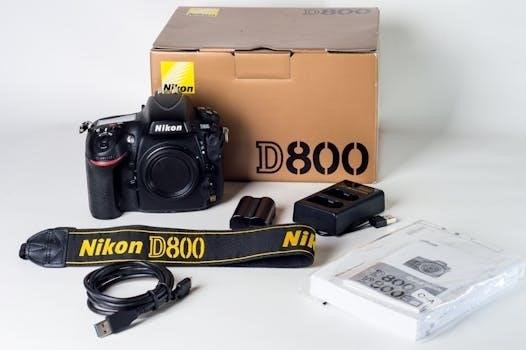Dehumidifier user manuals are essential guides for proper setup, operation, and maintenance. They provide crucial information for maximizing efficiency and ensuring safety while using your device. These manuals often include step-by-step instructions.
Importance of Reading the Manual
Reading the dehumidifier’s user manual is paramount to ensure its optimal performance and longevity. These manuals are not merely suggestions, but essential guides that outline specific instructions tailored to your model. Neglecting to read it could lead to improper usage, potentially causing damage to the unit or even safety hazards. The manual provides crucial information regarding the dehumidifier’s unique features, functions, and specific maintenance requirements. Following these instructions precisely helps maximize energy efficiency, prolonging the life of your appliance. Understanding the manual helps you set the correct humidity levels, choose the right operating modes, and troubleshoot common issues. It also provides safety guidelines for safe operation, safeguarding both the user and the device. By reading the manual, users can avoid costly mistakes, ensuring they’re using their dehumidifier effectively and safely.

Setting Up Your Dehumidifier
Proper setup is crucial for your dehumidifier’s optimal performance. This involves selecting the right location, ensuring proper positioning, and securely connecting it to a power source as instructed in the manual.
Initial Placement and Positioning
When initially placing your dehumidifier, consider the area you intend to dehumidify. Ensure the unit is positioned on a level surface for stable operation. Avoid placing it near dripping objects or in areas that might obstruct airflow. Maintain a certain distance from walls and furniture to allow for proper air circulation. For optimal performance in a room, consider the location to allow the most effective moisture removal from the air. If you intend to use the dehumidifier in a basement make sure it is not in a closed area like a closet. Remember, proper placement is key to the effectiveness of your dehumidifier.
Connecting to Power Supply
Before connecting your dehumidifier to a power source, verify that the voltage of your electrical outlet matches the voltage specified on the unit’s label. Use a grounded outlet, and never use an extension cord or adapter. Ensure that the power cord is fully extended and free of any damage. Plug the power cord securely into the outlet. Avoid using outlets that are already overloaded with other appliances. Do not place the dehumidifier power cord under rugs or in high traffic areas. Make sure the power switch is in the off position before connecting to the power supply. This ensures safe and reliable operation.

Operating Your Dehumidifier
Operating your dehumidifier involves understanding its controls, setting the desired humidity, and ensuring proper airflow for optimal performance. Always follow the specific instructions in your unit’s manual for best results.
Understanding Control Panel Functions
The control panel of your dehumidifier is the central hub for managing its operations. It typically includes buttons or a digital interface for power, fan speed, and humidity settings. Look for indicators that display the current humidity level and any active modes. Some panels feature timers for scheduled operation and error codes for troubleshooting. Familiarize yourself with each function to effectively control your dehumidifier and ensure it operates as intended. The manual will provide a detailed explanation of each button and display element, enabling you to customize your dehumidifier to your preferences. Understanding these functions leads to better performance and longer life for your dehumidifier.
Setting Desired Humidity Levels
Achieving your desired humidity level is crucial for comfort and preventing mold growth. Your dehumidifier’s control panel allows you to set a specific humidity percentage, often displayed in increments. The manual will guide you on how to adjust this setting, typically using up and down buttons. Aim for a humidity level between 30% and 50% for optimal conditions. The dehumidifier will automatically operate to reach and maintain your chosen level. Regularly check the humidity levels in your room, and adjust as needed based on weather conditions or personal comfort. Proper humidity control helps protect your home and improve air quality.

Maintaining Your Dehumidifier
Regular maintenance is crucial for optimal performance and longevity of your dehumidifier. Cleaning filters and drainage system are key aspects of the maintenance process, as detailed in the manual.
Regular Cleaning Procedures
Maintaining your dehumidifier through regular cleaning is vital for its performance and longevity. Always begin by unplugging the unit before initiating any cleaning procedures. The air filter should be cleaned every two weeks or more frequently depending on usage, as a dirty filter reduces efficiency and can lead to malfunctions. Gently wash the filter using warm soapy water, rinse thoroughly, and ensure it’s completely dry before reinserting it into the unit. The water tank requires regular cleaning to prevent mold and bacteria growth; empty and clean it with soapy water, rinsing well. Periodically wipe down the exterior with a damp cloth.
Drainage Options and Maintenance
Dehumidifiers typically offer multiple drainage options, including manual emptying of the water tank or continuous drainage via a hose. For manual drainage, empty the tank when it’s full to avoid overflow and potential damage. Continuous drainage requires connecting a hose to the designated outlet, ensuring the hose is properly positioned for water to flow freely into a drain. Regularly check the hose for clogs and ensure it is securely connected. Clean the drain outlet periodically to prevent blockages. These measures ensure efficient water removal and prevent moisture-related issues with your device.
Troubleshooting Common Issues
Dehumidifiers can encounter problems, such as error codes or reduced performance. Understanding common issues and how to address them can help keep your device running smoothly, and prevent bigger problems down the line.
Addressing Error Codes and Malfunctions
Dehumidifiers sometimes display error codes, which indicate specific problems. Consult your user manual to understand the meaning of each code. For example, some codes may point to a full water tank, a malfunctioning sensor, or an issue with the internal components. If the dehumidifier completely stops working or exhibits unusual behavior, it is essential to consult the manual’s troubleshooting section. Do not attempt to disassemble the unit yourself unless explicitly instructed to do so in the manual. Often, simple solutions, such as checking the power supply or cleaning the air filter, can resolve the issue. If the problem persists, consider contacting the manufacturer’s customer service for further assistance or repair.
Solving Performance Problems
If your dehumidifier isn’t removing moisture effectively, several factors could be at play. First, ensure the unit is placed correctly, away from obstructions and with adequate airflow. Check that the air filter is clean, as a clogged filter can significantly reduce performance. Make sure the selected humidity level is appropriate for your space and the ambient conditions. If the room is too large, the dehumidifier may not be powerful enough. Verify that the drainage system is working properly and that the hose, if used, isn’t kinked or blocked. Always refer to the user manual for guidance on optimizing performance and troubleshooting specific issues, such as incorrect settings or component failure.

Safety Precautions
Always prioritize safety when using a dehumidifier. Read the manual thoroughly before use. Avoid flammable sprays near the unit and never pour water onto it. Do not use in damp areas.
General Safety Guidelines
Before operating your dehumidifier, carefully read all safety instructions outlined in the user manual. Ensure the unit is placed on a stable, level surface to prevent tipping. Never operate the dehumidifier with a damaged cord or plug, and avoid using extension cords. Keep the air inlet and outlet clear of obstructions to ensure proper airflow and prevent overheating. Do not place the dehumidifier under dripping objects or in areas where water may accumulate. It is important to not use flammable sprays or liquids near the device. Always disconnect the dehumidifier from the power outlet before cleaning or maintenance. Children should be supervised and should not operate the dehumidifier without adult oversight. Following these guidelines helps ensure safe and effective operation of the appliance.
Avoiding Improper Usage
Improper usage of your dehumidifier can lead to reduced performance and potential safety hazards. Avoid placing the unit in enclosed spaces with inadequate ventilation, as this can cause it to overheat. Do not attempt to modify or repair the dehumidifier yourself; always consult a qualified technician for any issues. Never use the dehumidifier outdoors or in areas exposed to rain or moisture. Avoid tilting or moving the unit while it is operating or contains water. Do not insert objects into the air vents. Ensure the water tank is emptied regularly to prevent overflow and potential damage. Ignoring these guidelines may cause damage to the dehumidifier and void the warranty. Proper use is essential for the longevity of the device.





